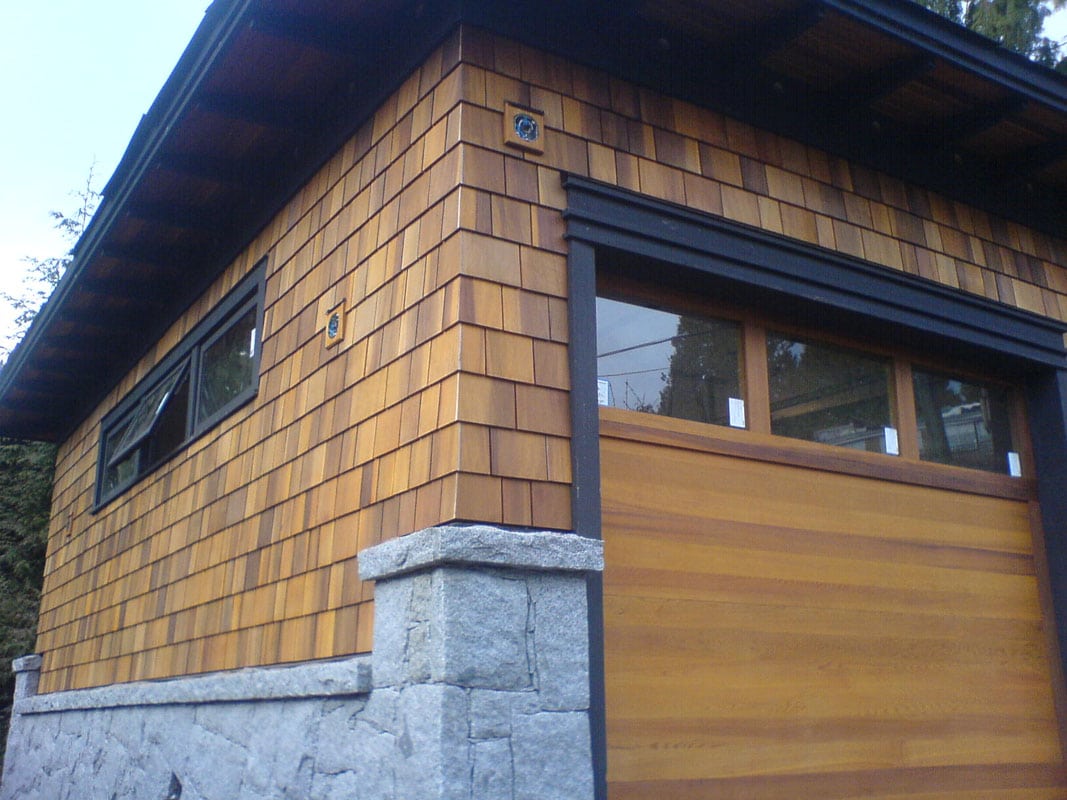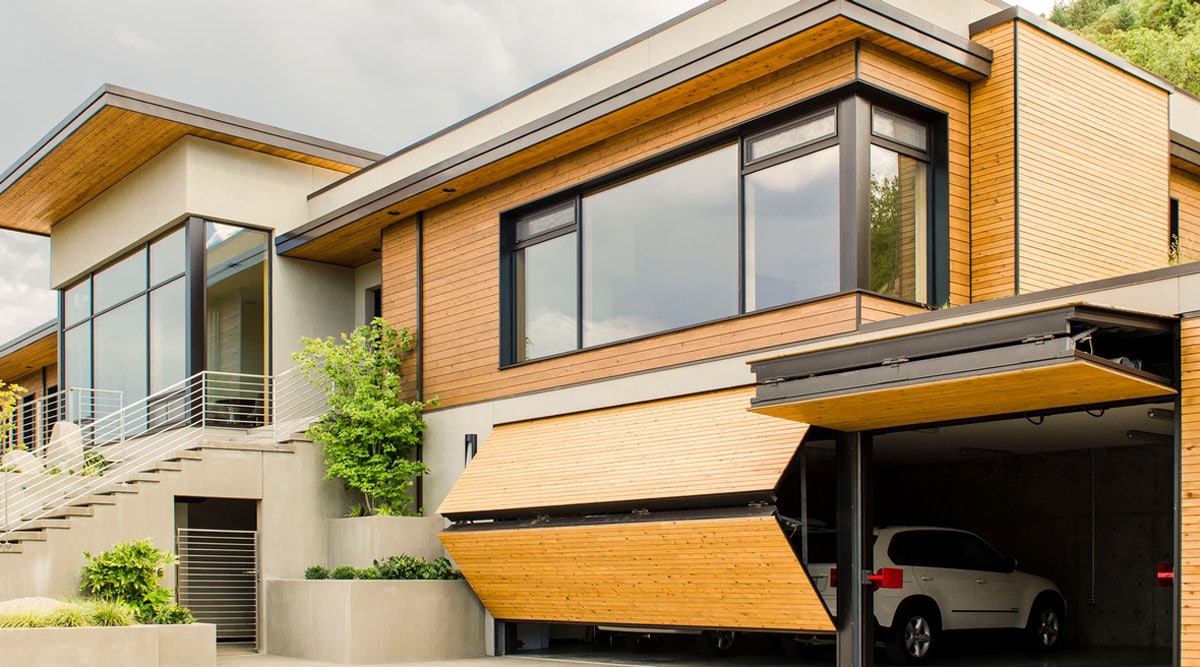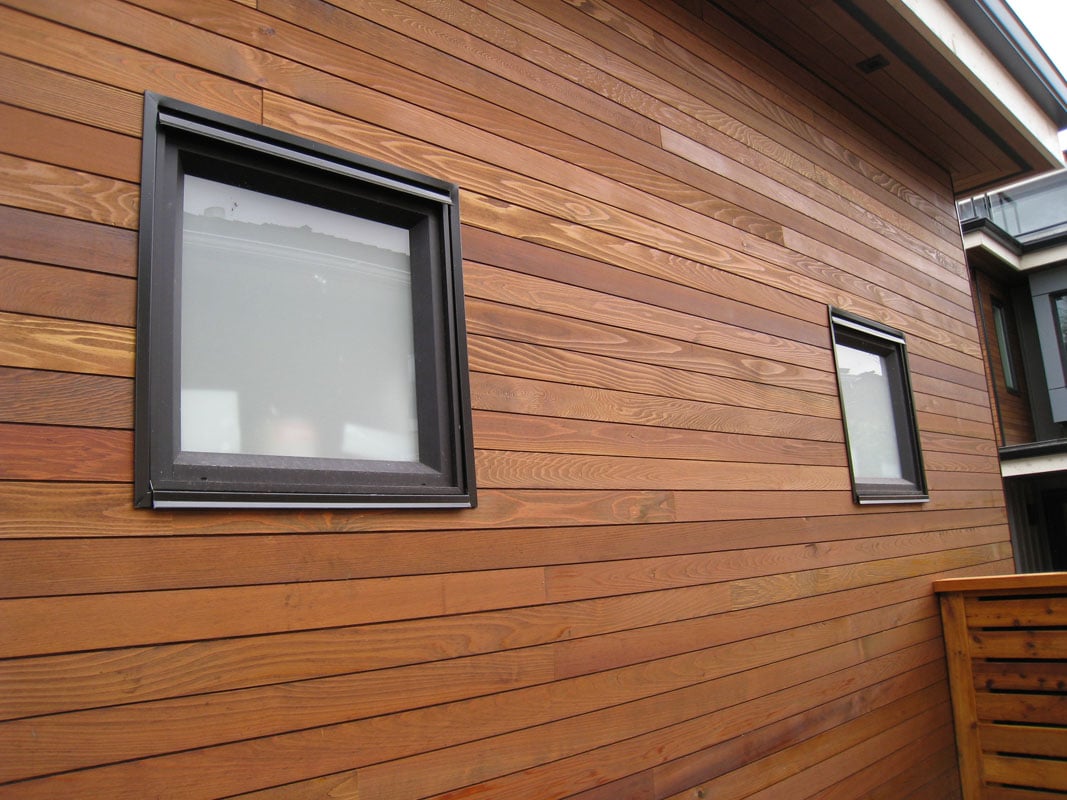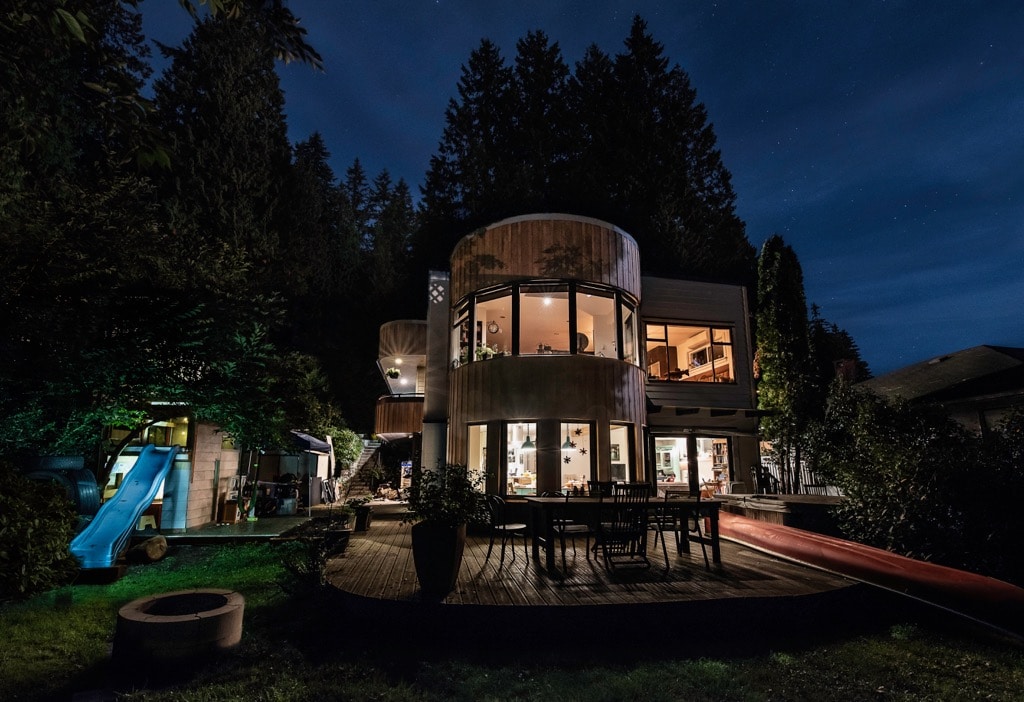HOME / SERVICES / SIDING INSTALLATION / CEDAR SIDING
Cedar Siding Installation
Cedar is our favorite product to work with. We are incredibly proud of every wood siding project we’ve completed to date. Each project perfectly exemplifies our high-level carpentry skills, with special attention paid to aspects like the natural colors of the boards, and amount of knots.
Give us a call to estimate your cedar siding renovation or new construction project – 604-305-3700.
Cedar is an evergreen tree native to the Mediterranean, with leaves resembling pine needles. It has been used for centuries and we can see the importance of it from just two facts. The native tribes in North America call it the “tree of life” and in Lebanon, the cedar tree is depicted on its national flag. Today cedar trees can be found in many regions of the world, from New Zealand and Australia to North America and Siberia. Overall, AZ Siding Vancouver considers cedar siding as the best possible option in construction for a variety of reasons. It is highly durable and resistant to moisture which is a big bonus for people living in and around Vancouver.
Wood (cedar) siding can be integrated with just about any style or design, be it Victorian style architecture or a modern day high tech building. Cedar contains a high concentration of natural compounds (tropolone, thujaplicins) that give (cedar) its characteristic aroma, and at the same time act as a natural barrier to fungi and wood-eating insects. Cedar siding is considered to be an environmentally friendly material. Most of the tree is harvested and any debris left behind is reclaimed by nature. It is also a renewable source and completely biodegradable, unlike aluminum, vinyl, or any other materials. It does not require factories to produce it, which amounts to a minimal environmental footprint, compared to other siding products (such as vinyl, aluminum or hardy).
It is important to know that the term “cedar siding” is commonly used to describe any siding made out of different (types of) wood such as cedar, redwood, pine, spruce, and fir.
Types of cedar siding
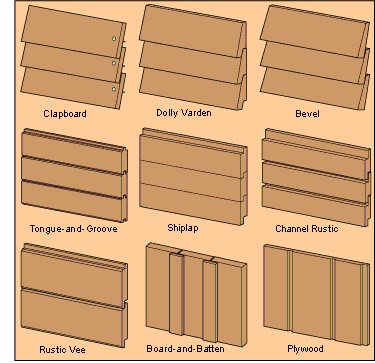
1. Tongue and Groove (T&G)
Joints
The joints between adjoining pieces are usually v-shaped but flush jointed, reveal and radius joints are also available. The different joints and surface textures in tongue and groove siding combine to provide a range of shadow line effects that enhance the product’s versatility.
-V-Joint
-Fineline (shown above)
-MicroV
Grades
Tongue and groove siding is manufactured in clear grades suitable for a more formal, elegant appearance, particularly when pieces are smooth faced. Knotty grades are in demand for their smart, casual look.
-Knotty STK
-Clear cedar (shown above)
2. Channel cedar siding

Channel siding is a popular type of lap siding and is used whenever a rustic appearance is desired. A versatile siding, it can be installed vertically, horizontally or diagonally. In channel siding, the profile of each board partially overlaps that of the board next to it creating a channel that gives shadow line effects, provides excellent weather protection and allows for dimensional movement.
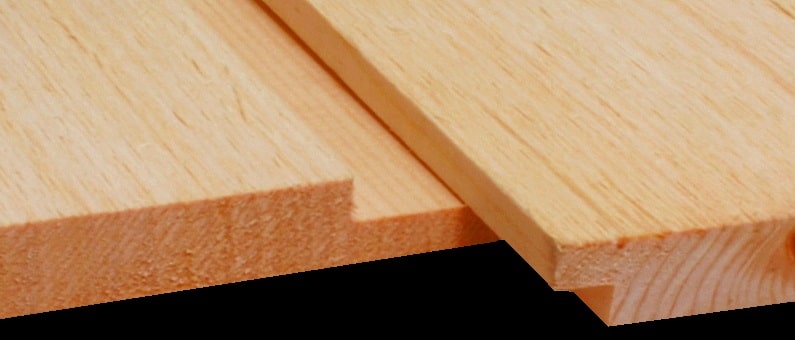
Grades
Channel siding is normally supplied in unseasoned knotty grades. The face side is saw textured. Commonly available sizes are 1″x6″, 1″x8″, and 1″x10″. Clear grades are manufactured to order.
3. Bevel cedar siding

Bevel siding is the most widely-used siding type. It is produced by resawing lumber at an angle to produce two pieces thicker on one edge than the other. The manufacturing process results in pieces with one face saw textured. The other face is smooth or saw textured depending on the grade and customer preference. Bevel siding is installed horizontally and gives an attractive shadow line which varies with the thickness of siding selected.
Grades
Bevel siding is available in clear and knotty grades. Clear siding gives the premium quality appearance and is ideal for prestigious, upmarket applications. Knotty siding has warmth and casual charm and is ideal for homes, cottages, club-houses, and applications where a rustic appearance is desired.
4. Board-n-batten cedar siding
Board-and-batten is a vertical design created using wide clear or knotty cedar boards spaced apart with narrower boards (battens) covering the joints. There are no set board or batten widths – various combinations are used to create different looks suitable for large or small-scale applications. A frequent combination is 1″x3″ battens and 1″x10″ boards. This can also be reversed with boards installed over battens to create a deep channel effect.
Texture and Sizes
Rough sawn, unseasoned boards or boards surfaced on one side and two edges (S1S2E) are commonly used for board-and-batten siding. Sizes are from 1″x 2″ to 1″x12″.
5. Cedar shingles/Cedar shake installation
Difference
Generally, a shingle is sawn on both sides and is thinner at the butt than a shake. A shake is typically split on one or both sides. There are important exceptions to this, (taper sawn shakes = shakes sawn on both sides) depending on the specific manufacturing method and the dimensions of a specific product.

